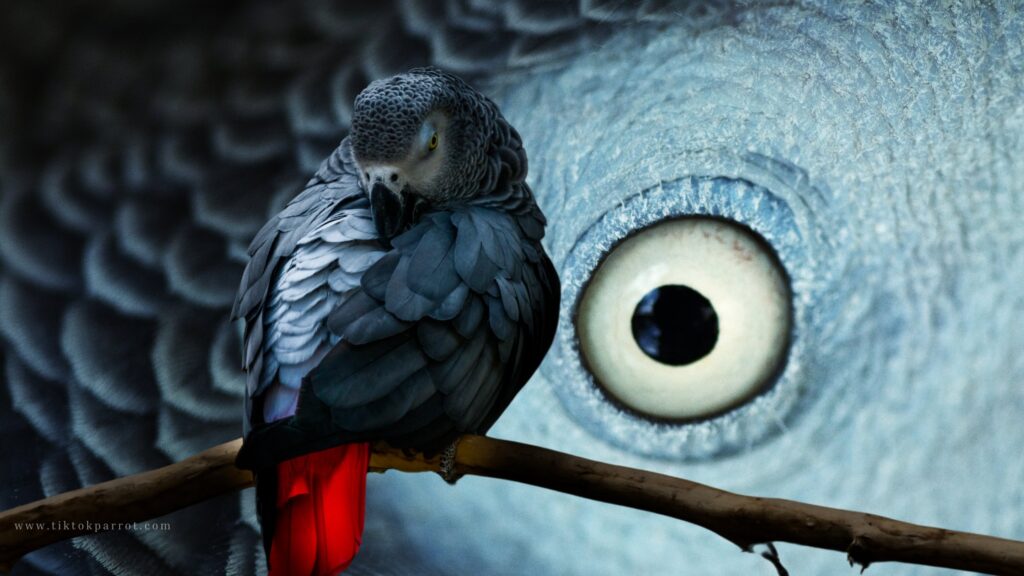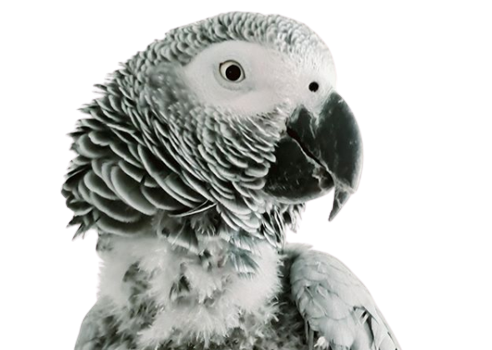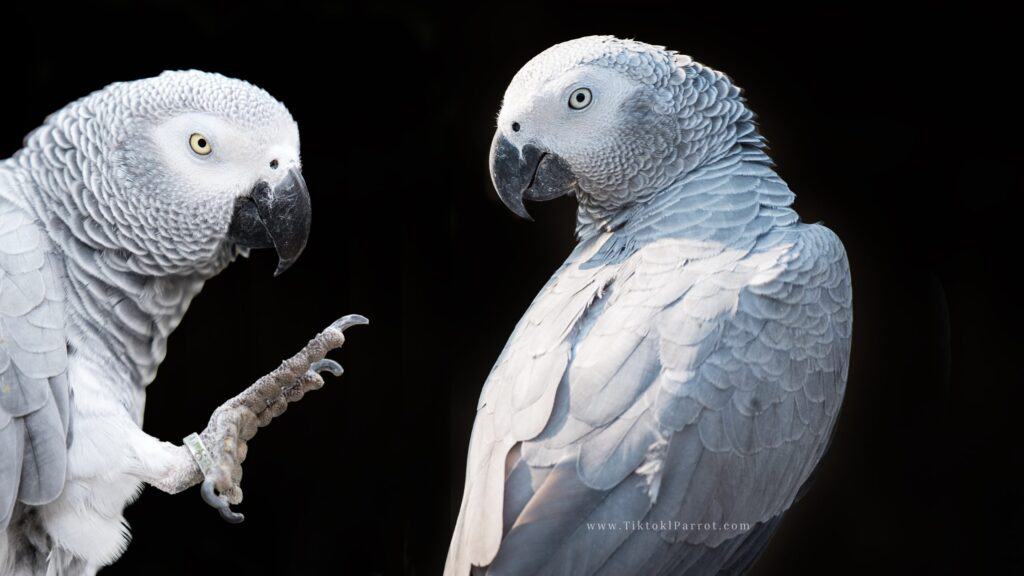If you’ve ever spent time around Wild African Grey Parrots, you know these feathered wonders have personalities as big as their beautiful, vibrant wings. But owning an African Grey isn’t all talking and tricks. Anyone who’s close to an African Grey has likely noticed the fine white dust that seems to coat everything.
That’s right, we’re talking about African Grey dandruff—also known as feather dust or dander. If you’re living with one of these charming birds, you’re living with their dander, too. So, what exactly is it, and how can you manage it without losing your mind (or your furniture’s color)? Let’s dive into the feathery world of African Grey dust!
Table of Contents
What is African Grey Parrot Dander?

Let’s break it down: African Greys, like many parrots, produce a fine white powder known as “feather dust.” This dust is a combination of tiny particles of dead skin cells (just like our dandruff) and particles from the protective powder that African Grey feathers naturally produce.
This “feather dust” keeps them looking their best in the wild, where African Greys use this powder to condition their feathers, repel moisture, and stay clean.
African Greys aren’t alone in this—other species like Cockatoos and Cockatiels are also “powder down” birds, producing this fine dust as part of their feather care routine. But among parrots, African Greys are one of the top dust-producing culprits. Their dust is pretty intense, so get ready for a little extra housekeeping when one of these beauties becomes part of your family.
Why Do African Greys Produce Feather Dust?
In the wild, African Grey Parrots rely on this powder for survival. You might even say it’s their built-in raincoat! When African Greys preen, they distribute this powder down, a special type of feather that disintegrates to form a soft dust, all over their bodies.
The dust acts as a barrier against water and keeps their feathers flexible, smooth, and strong. Just like some of us need a good moisturizer to avoid dry skin, African Greys have their own system for keeping their feathers in top shape.
The Downsides of Living with an African Grey’s Dust
Don’t get me wrong, African Greys are amazing companions, but if you’re a neat freak, their dust can feel like a nightmare. Think of it like the “glitter” of the parrot world—it gets everywhere! Here are a few common issues with African Grey dust:
- Constant Cleaning: That fine dust doesn’t just settle—it seems to spread to every corner of your house.
- Air Quality Concerns: This dust isn’t just about looks. It can actually affect the air quality in your home, especially if you have allergies or asthma.
- Parrot Health Risks: Too much feather dust can actually impact your Grey’s health, especially if their cage or environment isn’t cleaned regularly. Excessive dust can build up on their feathers and cause skin irritation or respiratory issues.
Managing African Grey Feather Dust: Tips for Parrot Parents
So, how do you keep both your African Grey happy and your home as dust-free as possible? Don’t worry—there are ways to coexist peacefully without turning your home into a dusty mess.
1. Air Purifiers are Your Best Friend
Investing in a high-quality HEPA air purifier is one of the best things you can do for both you and your parrot. These air purifiers help trap tiny particles in the air, including feather dust. Run the purifier in the room where your Grey spends most of its time to keep air quality fresh and breathable.
2. Regular Baths for Your Parrot
African Greys typically enjoy a good misting or light shower, and it helps to reduce the amount of dust they produce. You can mist them a few times a week with a spray bottle (use lukewarm water and a fine mist) or even bring them into the shower with you! Just make sure the water is gentle and not too hot.
3. Keep Their Cage Clean and Tidy
Feather dust builds up quickly, especially around your parrot’s living space. Cleaning their cage regularly, including wiping down perches and toys, will reduce the dust around their immediate area. Many parrot parents find that a daily wipe-down of cage surfaces and a full clean once a week works well to keep the dust down.
4. Regular Vacuuming
When you live with an African Grey, your vacuum becomes your best friend. A vacuum with a HEPA filter is ideal for capturing those tiny dust particles. Some parrot owners even find that handheld vacuums make quick daily cleanups much easier.
5. Avoid Carpets and Heavy Drapes
Feather dust loves to cling to fabrics, so consider using hard flooring in the rooms your parrot spends time in. Carpet and curtains hold onto dust like a magnet, making it difficult to keep things truly clean.
Health Implications of African Grey Dander
Aside from the hassle of cleaning, it’s important to consider how this dust can affect both your parrot’s health and yours. African Greys are prone to respiratory issues, and too much dust can actually irritate their airways. Regular bathing, as mentioned earlier, will help with this.
For humans, prolonged exposure to parrot dander can lead to allergic reactions or aggravate asthma symptoms. If you’re someone who deals with respiratory issues, consider wearing a mask while cleaning, and keep that air purifier running consistently.
Fun Fact: African Grey Feather Dust in the Wild
In the wild, African Greys don’t have the same issues with feather dust because they’re not confined to small spaces. The natural wind and weather conditions help carry away dander and keep them clean.
Just imagine your African Grey out in the rain forest, the dust they generate scattering in the breeze as they fly freely. In a sense, that dust was never meant to settle around them but instead to flow naturally with their movements in the wild.
Is There a Way to Reduce Feather Dust Production?
While you can’t stop your African Grey from producing feather dust, there are a few ways you might be able to minimize it:
- Diet Matters: A balanced diet with plenty of fresh fruits and vegetables can help maintain your parrot’s feather quality.
- Humidity Levels: Low humidity can lead to even more dust production. Use a humidifier in your Grey’s room, especially in the winter when indoor air can be particularly dry.
My Final Thoughts
I would say living with an African Grey Parrot is a joy, but it’s true that feather dust comes with the territory. Remember, your African Grey is just being itself, taking care of its feathers as nature intended. With the right strategies—air purifiers, regular baths, and a bit of regular cleaning—you can keep your home clean and enjoy a happy, healthy life with your Grey.
I used to give my bird Red Palm Oil, it’s recommended for African Grey also. From what I read, it greatly helps with the dry skin on the Greys.
Got any tips of your own for managing parrot dust? Or maybe you’re dealing with dust issues yourself and have questions? Feel free to share your experiences in the comments below. Let’s keep this conversation going!
If you liked this blog, please share it with your family and friends who might also find it helpful. If you love African Greys, join our community of Grey owners! You can meet other owners, share tips and learn from each other.
Stay safe and much love!



